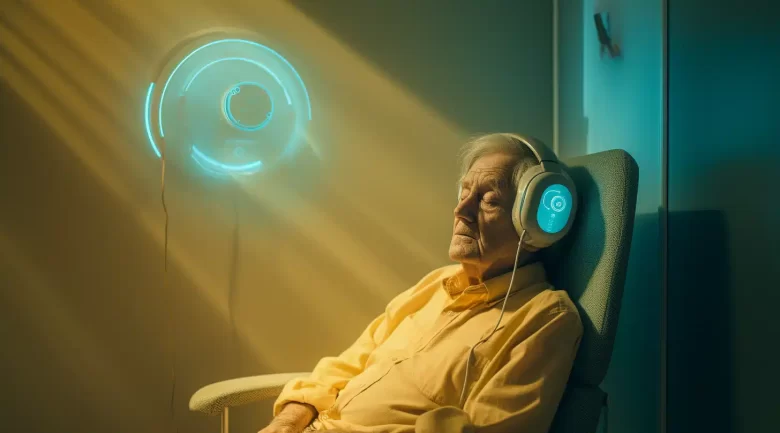As the world becomes increasingly tech-savvy, caregivers must stay informed about innovative tools that can enhance the quality of care for individuals with Alzheimer’s. Virtual Reality (VR) technology is one such advancement that holds great promise. In this blog post, we’ll explore essential aspects caregivers should know about Alzheimer’s and how VR can be a game-changer in caregiving.
Understanding Alzheimer’s Disease
Learn about Alzheimer’s symptoms and its impact on patients and caregivers.
Alzheimer’s disease isn’t just a memory loss; it’s a complex condition that affects daily living and communication. Caregivers often face challenges that require not only patience but also a deep understanding of the disease. Familiarizing yourself with the symptoms, such as confusion, mood swings, and disorientation, can help you respond effectively.
Recognizing the stages of Alzheimer’s is crucial for providing appropriate care. Each stage has unique characteristics ranging from mild memory loss to severe cognitive impairments and personality changes. Being aware of these can equip caregivers with the tools needed to navigate through these various stages and offer the best support.
Moreover, understanding the emotional toll of Alzheimer’s on both patients and caregivers is essential. Caregivers often experience stress, burnout, and feelings of isolation. By acknowledging these emotions, caregivers can seek support systems, ensuring they remain healthy while offering the best care.
Introduction to Virtual Reality (VR)
Get familiar with VR technology and its capabilities in a caregiving setting.
Virtual Reality is a technology that immerses users in a computer-generated environment. This is not just for gamers; it has significant applications in healthcare, especially for Alzheimer’s care. Imagine transporting someone who may no longer remember their past to a familiar place from their childhood, helping stimulate their brain and evoke memories.
The technology works by creating sensory experiences through graphics, sounds, and sometimes even tactile feedback. For caregivers, understanding how these simulations can provide comfort and engagement is key. VR can be a versatile tool, offering therapy that goes beyond words, and making sessions more interactive and enjoyable.
It’s essential to recognize the accessibility of VR. As technology evolves, the equipment becomes more affordable and user-friendly. By exploring various options, caregivers can find the right fit for their loved ones, making VR a practical addition to care strategies.
Benefits of VR for Alzheimer’s Patients
Explore how VR can help stimulate memory, engagement, and relaxation for individuals with Alzheimer’s.
One of the remarkable benefits of VR for Alzheimer’s patients is its ability to stimulate memory. As the immersive experience can recreate familiar environments, it often triggers forgotten memories and emotions. Research has shown that this can not only uplift spirits but also encourage cognitive activity, providing a semblance of normalcy.
Moreover, engagement is a critical component of well-being for Alzheimer’s patients. With VR, caregivers can offer interactive experiences that are both enjoyable and beneficial. Whether it’s a calming beach scene or a journey through an art gallery, these activities can spark conversations and interactions, fostering deeper connections between caregivers and patients.
Additionally, relaxation is vital for reducing anxiety and agitation, common in Alzheimer’s patients. VR programs designed for meditation and mindfulness can create serene spaces within the crowded world of Alzheimer’s. By using such tools, caregivers can help manage stress and create moments of peace, which can be incredibly therapeutic.
How Caregivers Can Implement VR
Discover practical steps caregivers can take to incorporate VR into their care routines.
Implementing VR into caregiving can seem daunting, but it can be a straightforward process. Start by selecting user-friendly VR equipment that’s designed for simplicity. Many platforms include pre-loaded experiences tailored specifically for seniors, making them easier to access.
Establish a routine with designated VR sessions, where patients can engage with the content at a comfortable pace. Setting aside time can help them look forward to these interactions, creating a structured environment that they can rely on. It’s essential for caregivers to remain present during these sessions, offering support and encouragement.
To maximize benefits, always observe how the patient responds. This feedback can guide adjustments, determining what types of environments or experiences they enjoy most. Being attentive and responsive in this way can foster a more profound connection and enrich the caregiving experience.
Challenges and Considerations
Discuss potential hurdles and important factors to consider when using VR with Alzheimer’s patients.
Though the potential of VR is exciting, caregivers must remain mindful of certain challenges. One significant factor is the patient’s level of comfort with technology. Some individuals may be apprehensive or resistant to using VR, which necessitates a gentle introduction and a willingness to reassure them.
Another consideration is the physical aspect of using VR. While many devices are lightweight, caregivers should ensure that patients can wear the headsets comfortably without causing strain or discomfort. Adjustments might be needed, and caregivers should prioritize safety while exploring these innovative tools.
Furthermore, supervision during VR sessions is critical. Patients may become disoriented or disengaged, and having a caregiver present can help mitigate any potential confusion. Awareness of the patient’s mood and reaction can ensure that the experience remains enjoyable and beneficial rather than stressful.
The Future of Alzheimer’s Care with VR
Look ahead to the evolving role of VR technology in enhancing Alzheimer’s care.
As technology advances, the role of VR in Alzheimer’s care is poised for growth. Research continues to explore new applications and therapies that can further benefit patients. Virtual Reality could soon evolve to include customized experiences based on individual histories and preferences, enhancing the personalization of care.
Moreover, as more caregivers become aware of VR’s advantages, we may witness an increase in its integration within various care settings—be it at home or in assisted living facilities. Training programs for caregivers will likely follow, promoting best practices for using this technology effectively.
The future promises a broader acceptance of innovative tools like VR, helping to create a more supportive environment for Alzheimer’s patients. By staying informed and adaptable, caregivers can transform their approach to delivering care, ultimately improving the quality of life for those they serve.
Key Takeaways
Embracing technology like VR can empower caregivers and improve the lives of those with Alzheimer’s. Understanding its benefits and applications can provide a more enriching experience for both caregivers and patients. Stay curious and open to the innovations that can enhance your caregiving journey!




